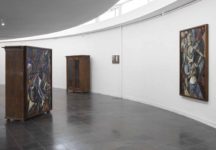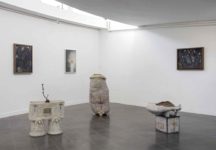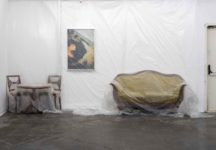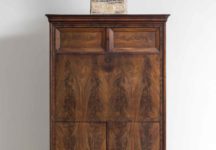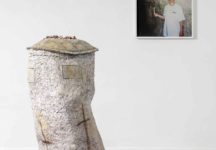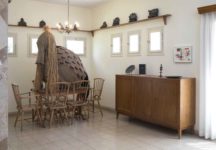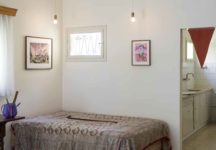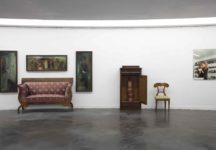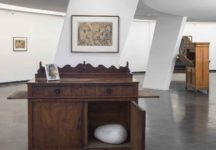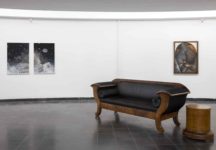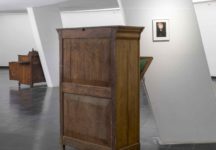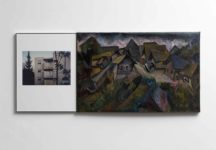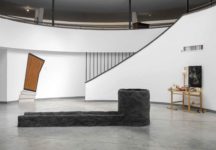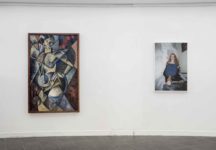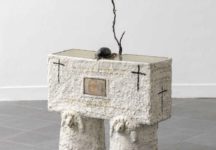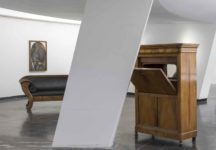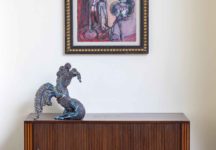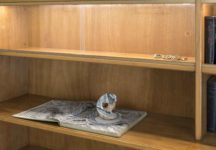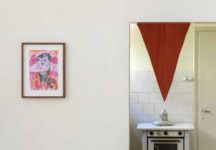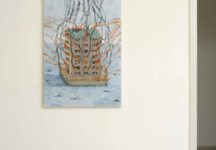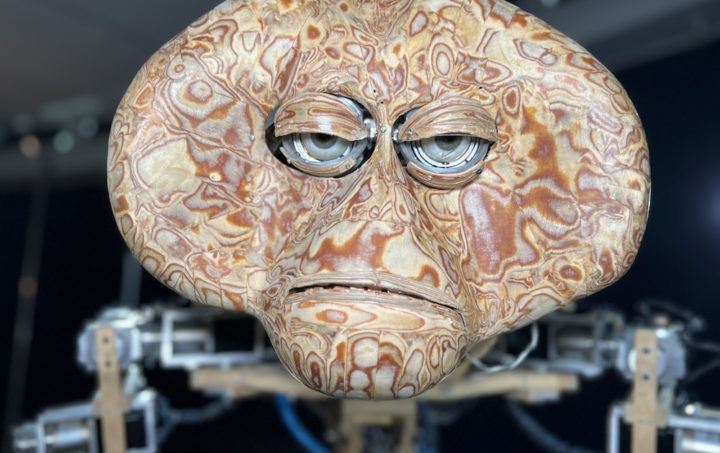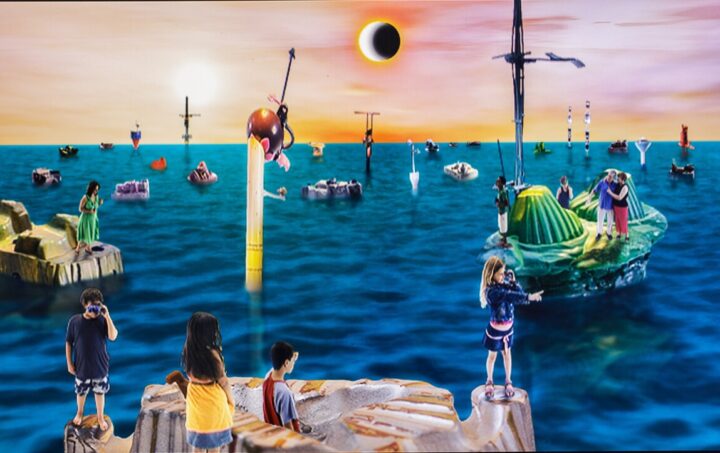A Storm in a Teacup: Issachar Ber Ryback in Dialogue
Bat Yam Museum of Art
08.07.2021 - 24.03.2022Dates: 08.07.2021-24.03.2022
Artists: Etti Abergel, Eden Bannet, Yuval Bezalel, Marc Chagall, Ruti De Vries, Yael Efrati, Bianca Eshel Gershuni, Noa Glazer, Michal Helfman, Samuel Krauss, Ohad Meromi, Shir Moran, Guy Nissenhaus, Galia Hili Pasternak, Shani Pri-Ness, Efrat Rubinstein, Issachar Ber Ryback, Ester Schneider, Peral Schneider, Noa Schwartz. Shay Lee Uziel, Anna Yam, Alexandra Zukerman
Curators: Naama Arad and Hila Cohen Schneiderman
About the Exhibition
The artist Issachar Ber Ryback (1935–1987) never visited Bat Yam. His estate reached the city in the 1950s, when its first mayor, David Ben Ari, invited Ryback’s widow Sonia to move to Bat Yam. Her house was built in the vicinity of the art museum, at the heart of the Ramat Yoself neighborhood – the city’s cultural quarter. The museum itself dedicated a special exhibition space to Ryback’s works. After Sonia’s death in the 1970s, due to a range of complex processes occurring in Bat Yam, the Ryback house was abandoned. As a result, the collection of his works fell into a state of neglect, and they have never since been put on display. In recent years, the house has been transformed into an art education center, briefly also serving as a vaccination center during the COVID-19 pandemic. During this same period, the collection, which is still stored in the house, underwent a comprehensive restoration process. The current exhibition, which revolves around Ryback’s body of works, is part of a re-exploration of the museum’s history in conjunction with its 60th anniversary, as well as a consideration of its current symbolic and real function – serving as a home for local culture that is currently in a state of crisis.
The exhibition “A Storm in a Teacup: Issachar Ber Ryback in Dialogue” looks at Ryback’s body of works from a contemporary viewpoint. At its heart is the shtetl, with its countless manifestations, both then and now. The exhibition is divided between two venues, which are both part of the MoBY cluster: the first venue, the Museum of Contemporary Art, features the works created by Ryback himself during three different periods. Displayed alongside them are sculptures by Bianca Eshel Gershuni, who passed away in 2020 – hybrids expressing a symbiotic relationship between body and object; also on display is a series of photographs by Anna Yam, which capture the life of the Russian community in Israel, as well as a selection of Biedermeier furniture. Included as well are works by Noa Glazer, Yael Efrati, and Shy Lee Uziel. In this context we are thinking of the museum as a microcosm of objects that have migrated from different places and times, coming together in a circular space. The museum’s entrance floor can be seen as a city square, whereas the top floor functions as an internal space, suspended between the private realm of the home and the public realm of the museum.
Strolling through the streets of Bat Yam, visitors are invited to walk to the exhibition’s second focal point, the Shalom Asch House – the former home of the avant-garde Yiddish writer who, invited by Mayor Ben Ari, moved to the city during the 1950s. Asch was a collector of art, Judaica, and antiquarian books. He planned the house himself, and lived there for two years with his wife, Mathilde, prior to his death. The house, whose permanent display features Asch’s collection, is now hosting a contemporary art exhibition that celebrates the domestic sphere. The works included in this exhibition explore everyday life in a humorous, experimental language, offering a light, spontaneous depiction of a bourgeois lifestyle more closely resembling that of aristocrats who have lost their fortune than that of a cultural elite.
Interestingly enough, Ryback’s works and Asch’s collections eventually arrived in the same shtetl – Bat Yam. One could argue that if the museum functions as a mausoleum featuring Ryback’s estate, which was forgotten and neglected for many years, the Shalom Asch House is a place where we can all gather, drink a cup of tea, and mourn the loss of cultural treasures.
Photography: Elad Sarig


